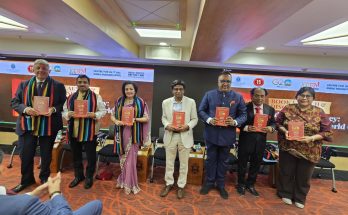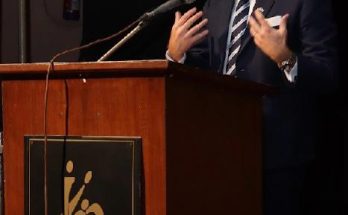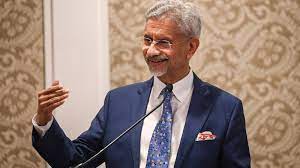The Indo-US bus, stalled since 2009, is moving again. It has new tyres, engine and a coat of paint, and its cocky new Indian driver is determined to take it in his chosen direction: not just towards a particular country but the world at large. In many ways, Barack Obama’s visit has been about Narendra Modi stepping out and making plans for India in the scheme of global matters.
What the Americans wanted of India was summed up by an American official in 2005: “Its (US) goal is to help India become a major world power in the 21st century .We understand fully the implications, including military implications, of that statement.” The problem, it turned out, was that India was not ready for it. The opportunity given by the 2005 IndoUS nuclear deal was squandered.Along with it went the potential for closer military partnership with the US outlined in the 2005 `New Framework for Indo-US Defence Relations’.
Despite efforts made by former US secretary of defence Ashton Carter to revive defence trade and technology partnership through the Defence Trade and Technology Initiative (DTTI) of February 2012, the Indo-US bus remained stalled.
The key reason for New Delhi refusing to play ball was the politics of the times. Prime Minister Manmohan Singh was committed to close ties with the US. But leading members of his Cabinet such as defence minister AK Antony was determined to prevent this.Singh was unable to get his boss, Congress president Sonia Gandhi to get Antony to lay off. Under Antony , the ministry viewed American proposals to operationalise Indo-US cooperation as suspicious, if not downright malign.
Arms sales in the US are seen through the prism of Washington’s strategic and national security considerations.Within these parameters, the US tries to improve bilateral militaryto-military ties by promoting `interoperability’ through the operation of similar systems. A corollary of this is to enhance the logistic ability of US forces which operate on a global scale.
Another key US goal is to protect its advanced defence technology from countries like China and Russia. The US remains a leading military power and in many areas its systems are a generation ahead of what its competitors and rivals can field. The situation has now changed. India has a majority government and a PM who revels in being seen as decisive.
The key elements remain the same, but now there is a sense of purpose and direction. On January 22, the two sides renewed the Framework agreement on defence relations for another 10 years and signed a new R&D Testing and Evaluation agreement to facilitate cooperation in defence R&D. Further, they have identified four `pathfinder’ projects to move ahead on the DTTI and created a working group to “explore aircraft carrier technology sharing and design” as well as for developing jet engine technology .
As of now we can only speculate about the technologies on offer.But the aircraft carrier technology bit is promising since the US is the foremost operator of aircraft carriers and decades ahead of everyone else.
As Obama has noted, the new partnership cannot be an “overnight” event -“It is going to take some time and patience.” It also requires the tightening of some more nuts and bolts -getting India to sign on key foundational agreements like the Communications Interoperability and Security Memorandum Agreement (CISMOA), the Logistics Support Agreement (LSA) and so on. Equally , it needs India to become a member of the four key technology cartels.
In the joint statement, the US has accepted that India is ready for the Missile Technology Regime Control (MTCR) and the Nuclear Suppliers Group (NSG). but the Wassenaar Arrangement that governs dual-use (civilian and military) technology is also an important cartel to breach.
There are other areas of promise of India and the US coming closer and thereby the former `stepping out’ more: maritime security , counter-terrorism, intelligence and counter-IED (improvised explosive devise) technology and so on. The important device of a hotline between the national security advisors can be a game changer for the two nations half a globe away from each other.
But the most important element is in place: the sense of shared direction and purpose -of India finally agreeing and preparing -to pull its own weight, both economically and geopolitically , with more than a little help from friends.
(The writer is a Distinguished Fellow at Observer Research Foundation, Delhi)
Author Profile
- India Writes Network (www.indiawrites.org) is an emerging think tank and a media-publishing company focused on international affairs & the India Story. Centre for Global India Insights is the research arm of India Writes Network. To subscribe to India and the World, write to editor@indiawrites.org. A venture of TGII Media Private Limited, a leading media, publishing and consultancy company, IWN has carved a niche for balanced and exhaustive reporting and analysis of international affairs. Eminent personalities, politicians, diplomats, authors, strategy gurus and news-makers have contributed to India Writes Network, as also “India and the World,” a magazine focused on global affairs.
Latest entries
 DiplomacyApril 23, 2024Resetting West Asia, re-booting the world, but not fast enough: T.S. Tirumurti
DiplomacyApril 23, 2024Resetting West Asia, re-booting the world, but not fast enough: T.S. Tirumurti India and the WorldApril 22, 2024India’s G20 Legacy: Mainstreaming Africa, Global South in global agenda
India and the WorldApril 22, 2024India’s G20 Legacy: Mainstreaming Africa, Global South in global agenda DiplomacyApril 10, 2024Diplomat-author Lakshmi Puri pitches for women power at LSR
DiplomacyApril 10, 2024Diplomat-author Lakshmi Puri pitches for women power at LSR India and the WorldApril 6, 2024UN envoy pitches to take India’s solutions to the world stage
India and the WorldApril 6, 2024UN envoy pitches to take India’s solutions to the world stage








